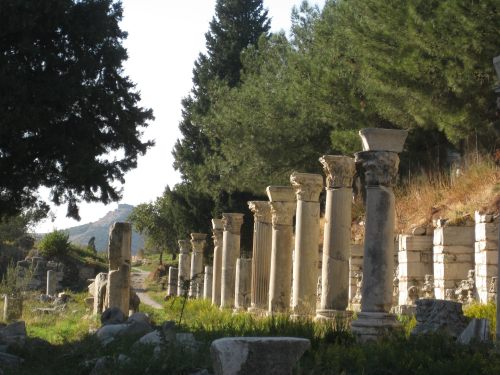classicalmonuments:Tetragonos Agora(Commercial Agora )Ephesus, Turkey1st century BCE111 x 111 mThe C
classicalmonuments:Tetragonos Agora(Commercial Agora )Ephesus, Turkey1st century BCE111 x 111 mThe Commercial (Tetragonos) Agora of Ephesus dates from the period the city was refounded by Augustus and succeeded the respective administrative Agora of Hellenistic Ephesus. It was near the harbour and served as the commercial centre of the city. It included a square court closed on all sides by colonnades, behind which laid shops and workshops. The best preserved gate was on the southern side and had been dedicated by two wealthy Imperial freedmen, Mazaeus and Mithradates, in 3 or 2 BCE. Apart from this gate there were two more gates in the Agora, a monumental propylon on the western side and a much more simply constructed gate on the northern side.The Commercial Agora of Ephesus, known as Tetragonos Agora, lies to the north of the Library of Celsus. It was built in the second half of the 1st century BCE in the course of a programme of monumentalization carried out in the region as Ephesus became the capital city of the province and its population increased.The Agora includes a vast open square, measuring 111 x 111 m, surrounded by four two-aisle colonnades 11.20 m wide, behind which there were about 100 rooms. The rooms served mainly as commercial shops, but they were also used as meeting places for guild associations and political organisations.The shops occasionally had an intermediate floor, which could serve as either a storeroom or an office and workroom. In the anteroom of these chambers there were weights, tables and shelves for putting goods for sale. The paved square of the Agora was divided into parts covered by tents, under which various products were exhibited and trading took place.further reading -- source link
Tumblr Blog : classicalmonuments.tumblr.com






